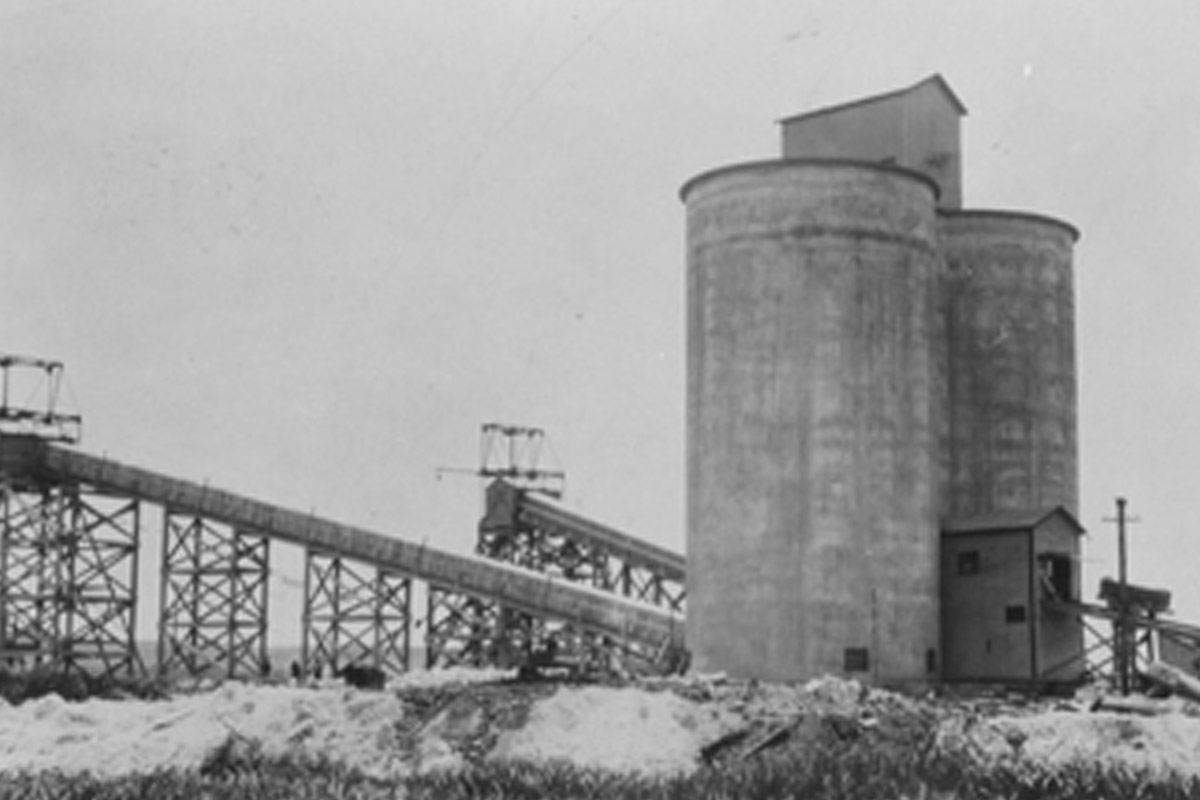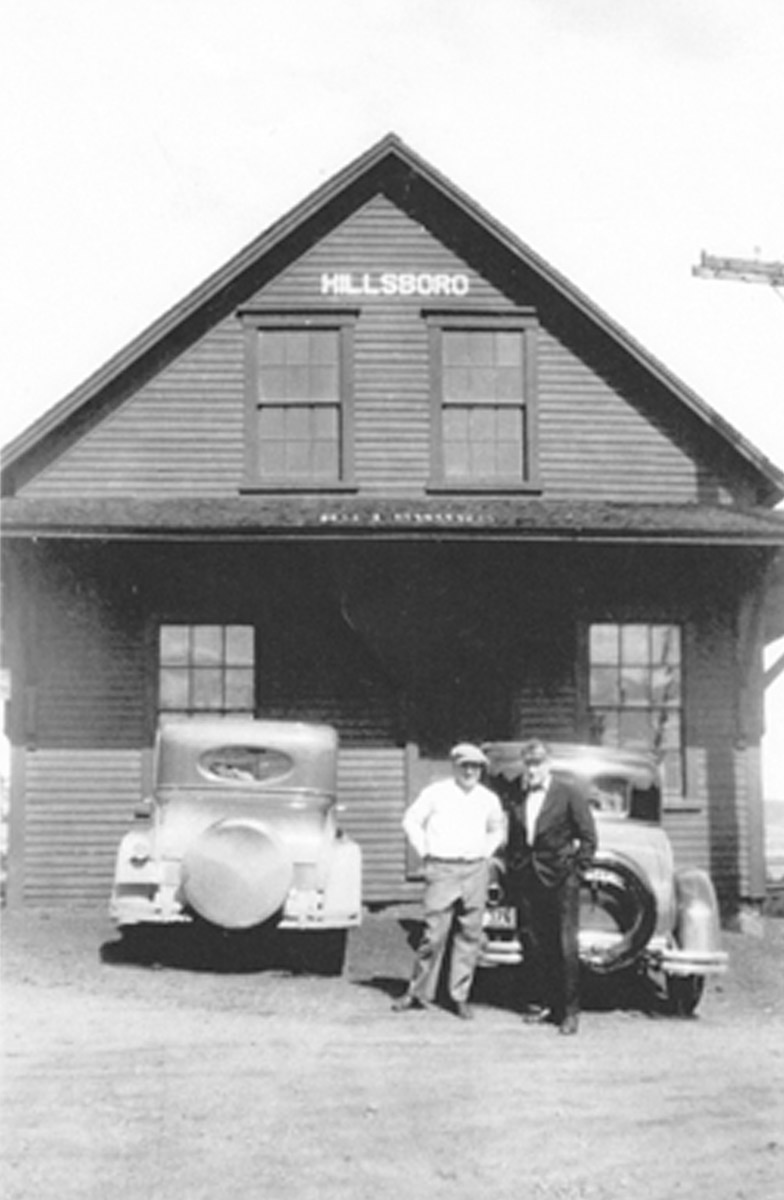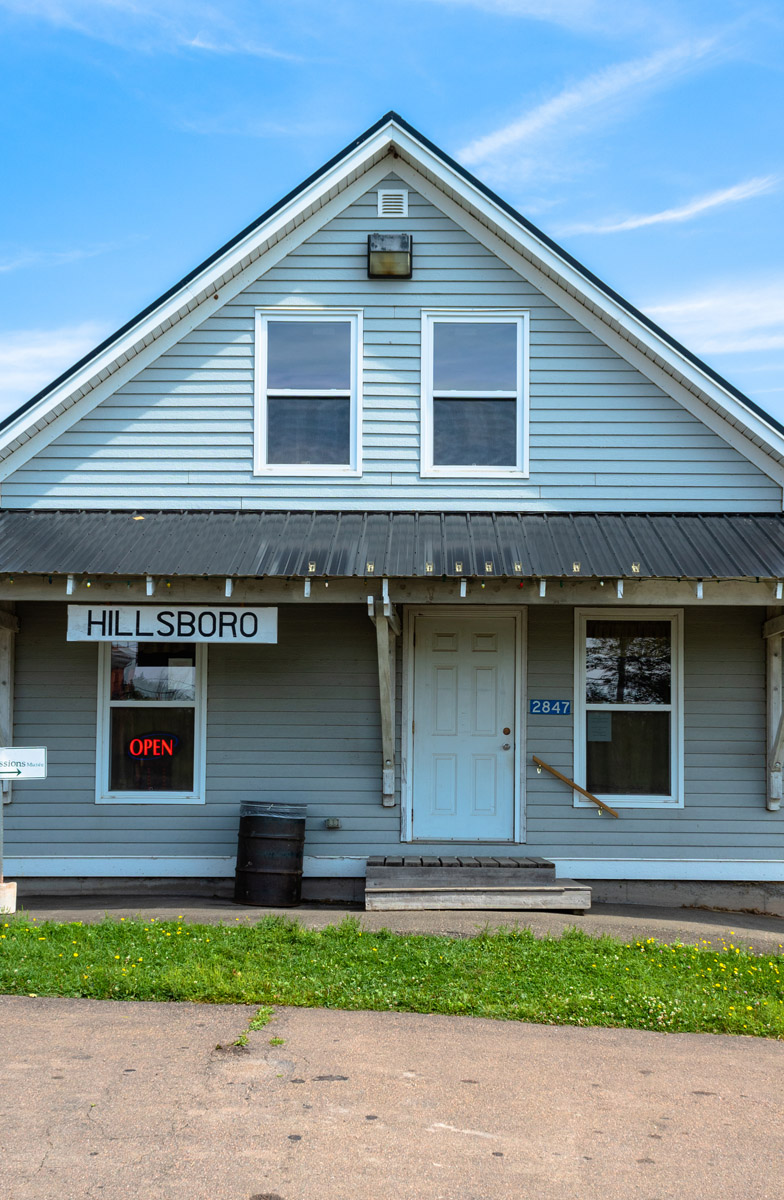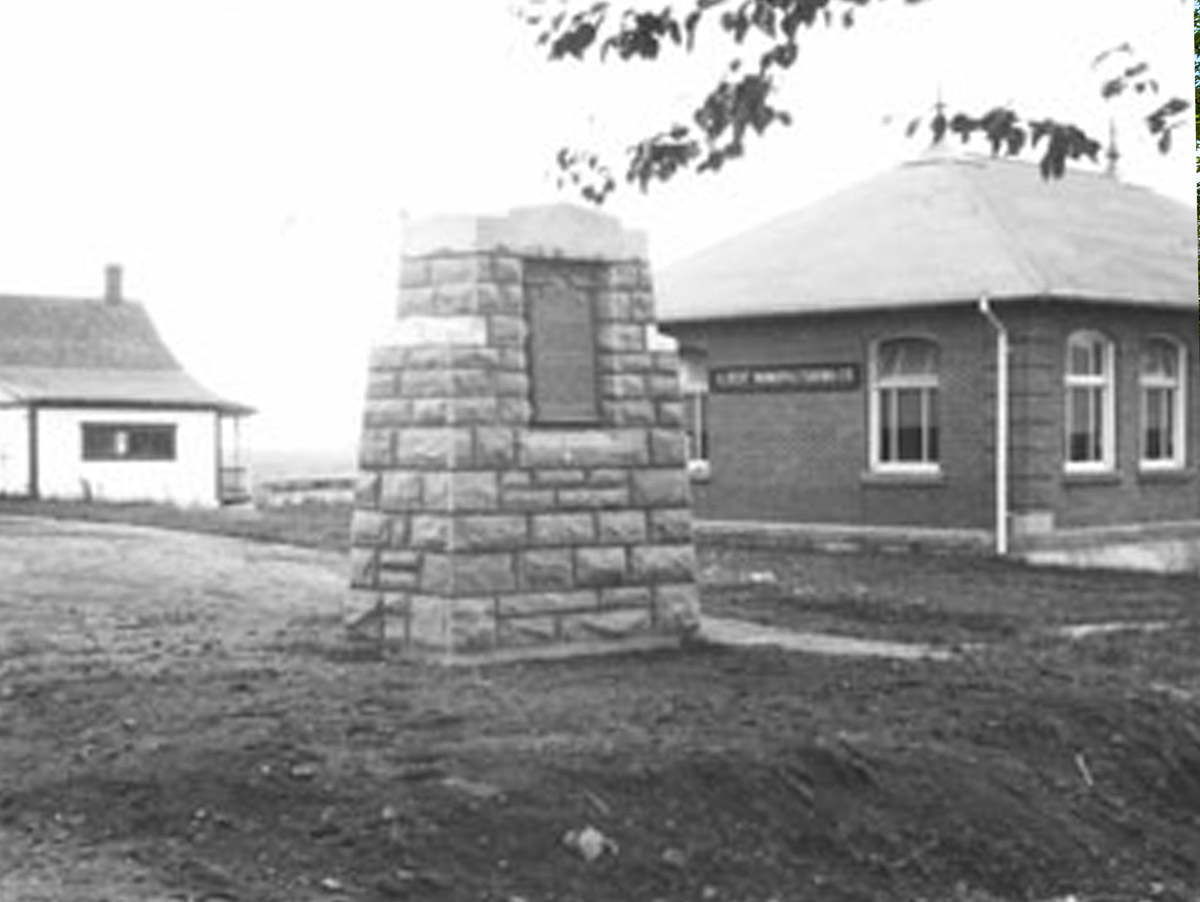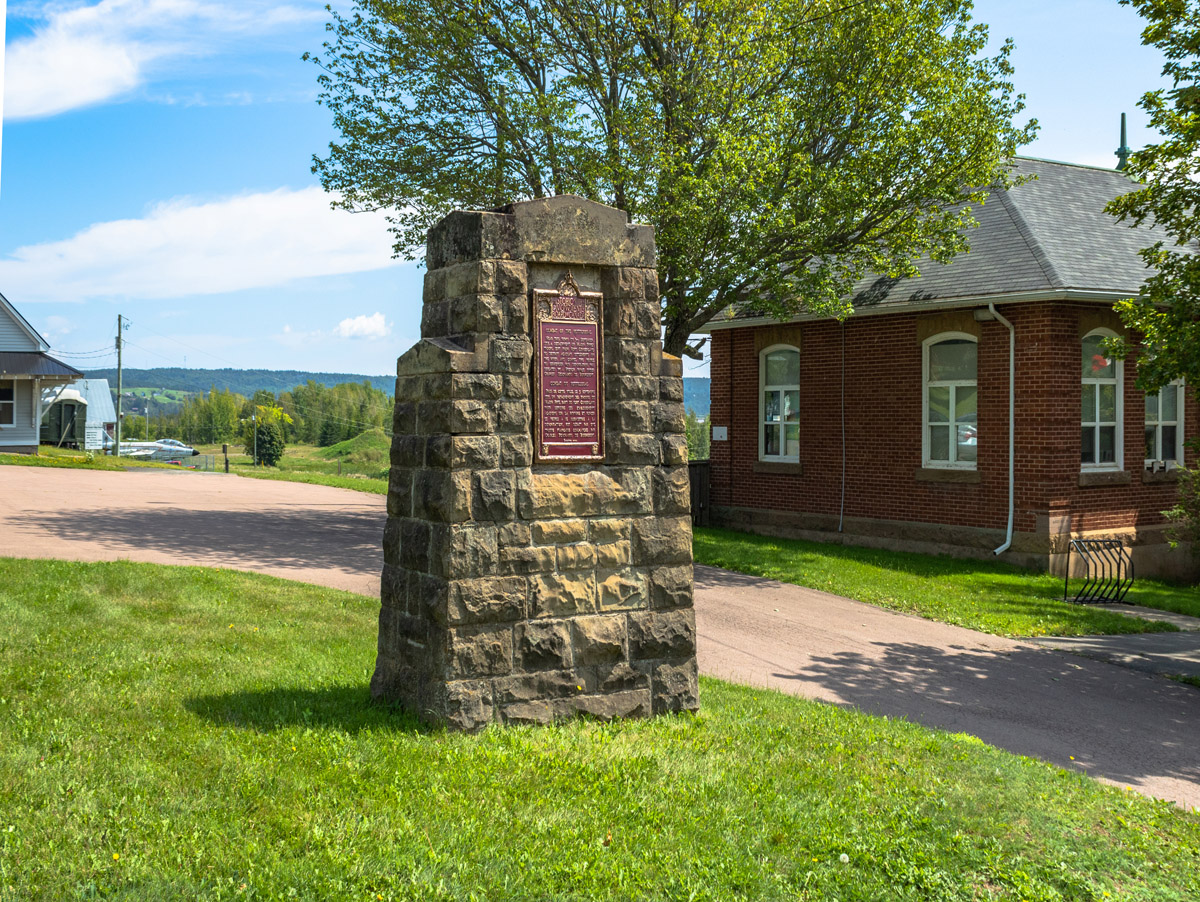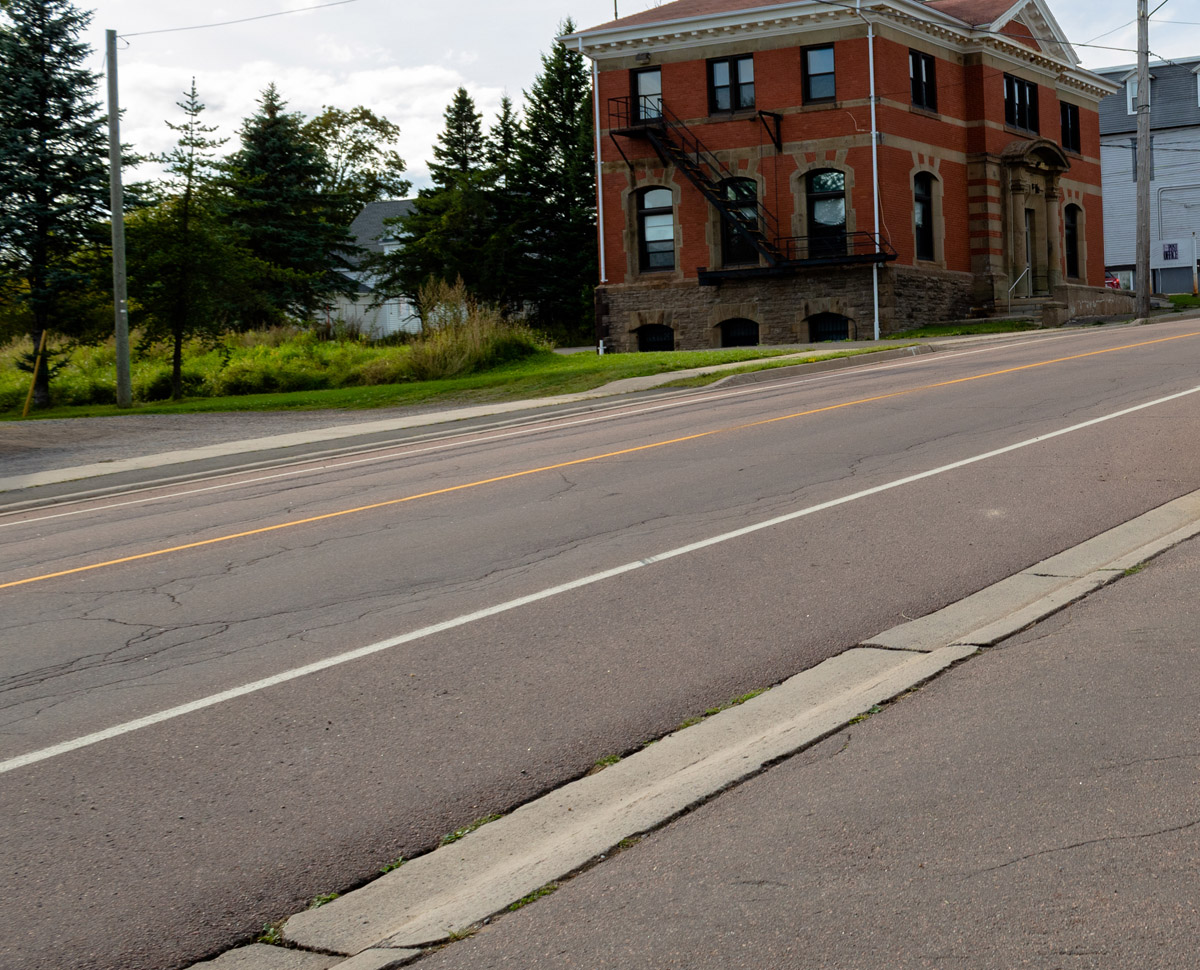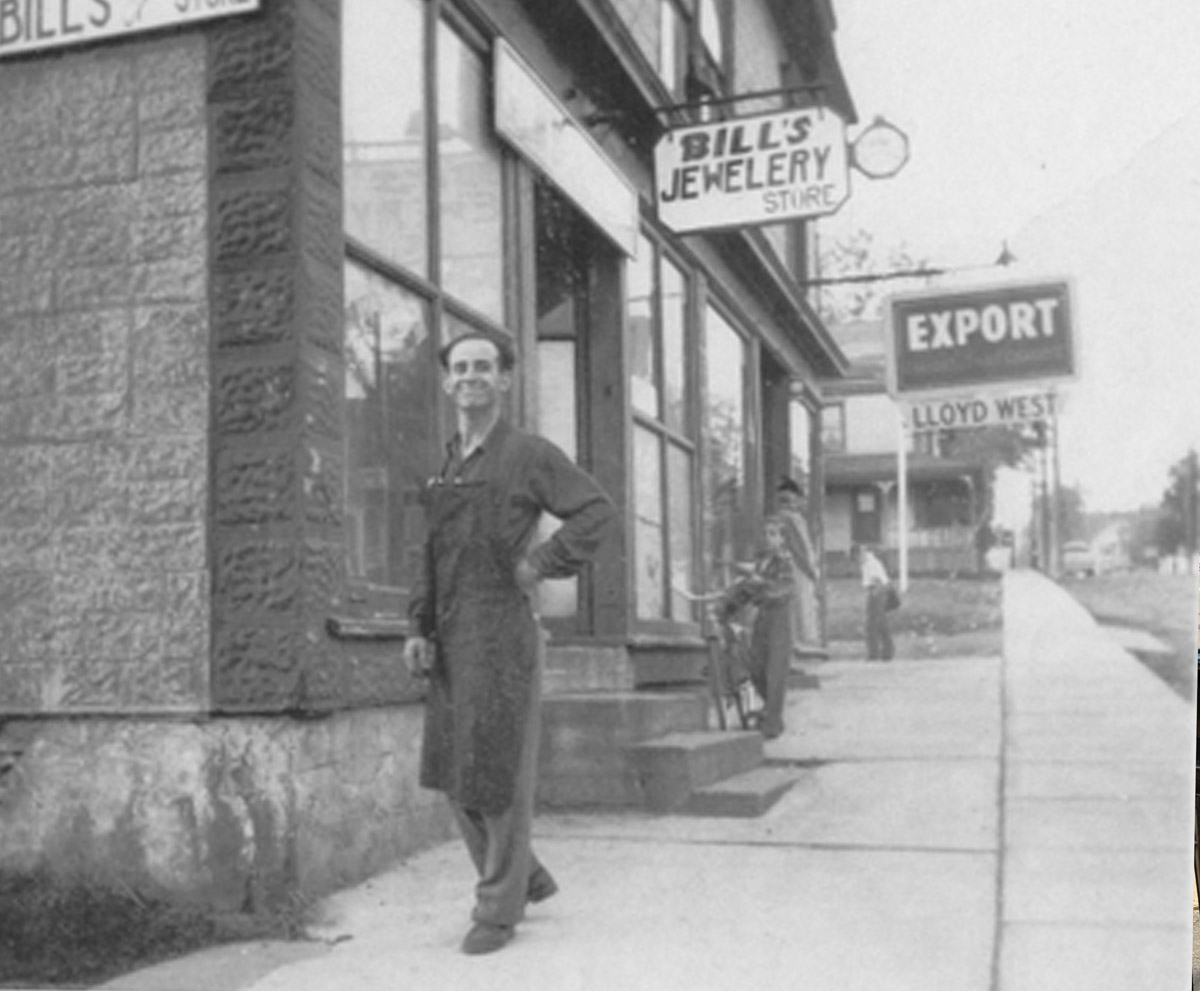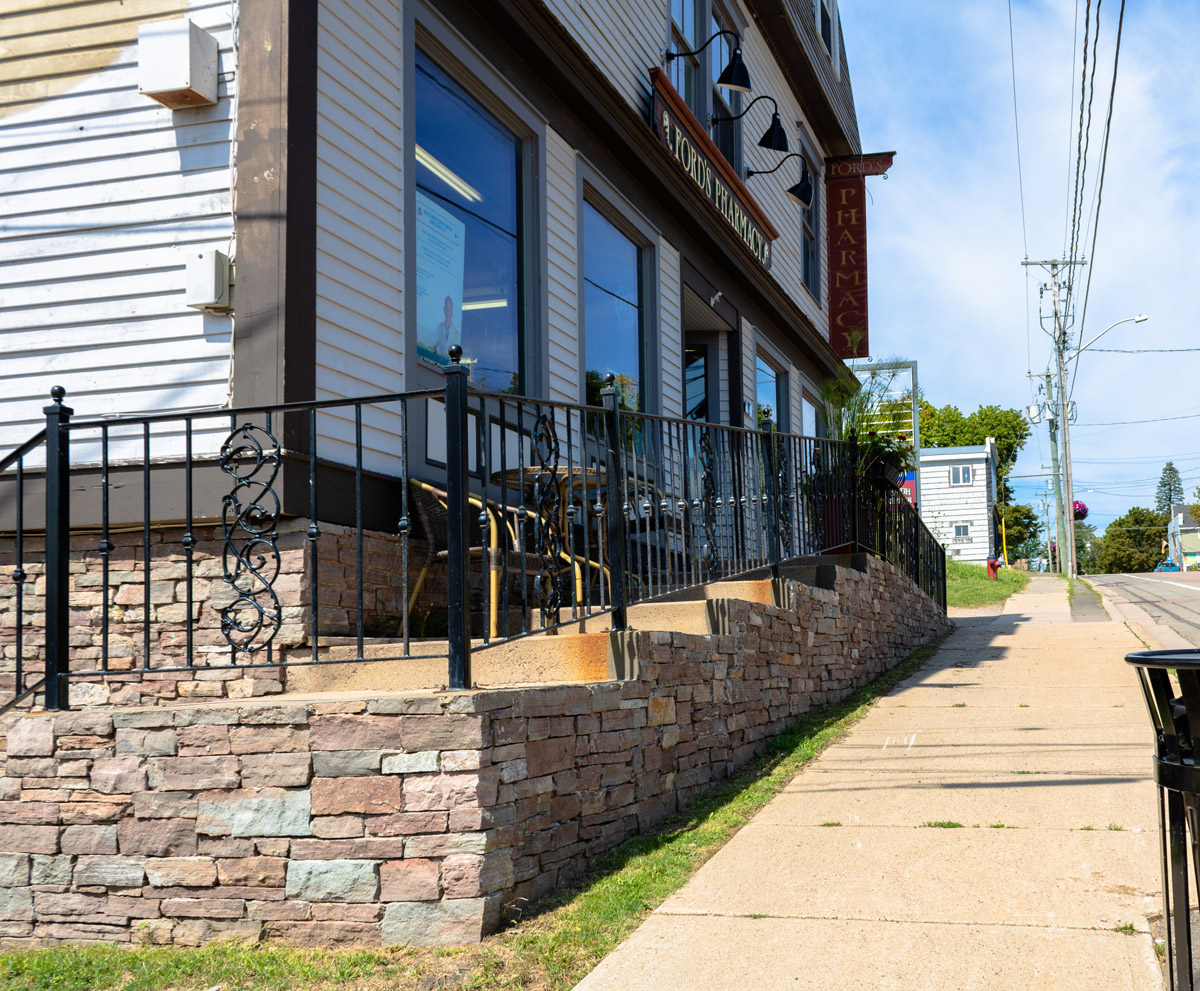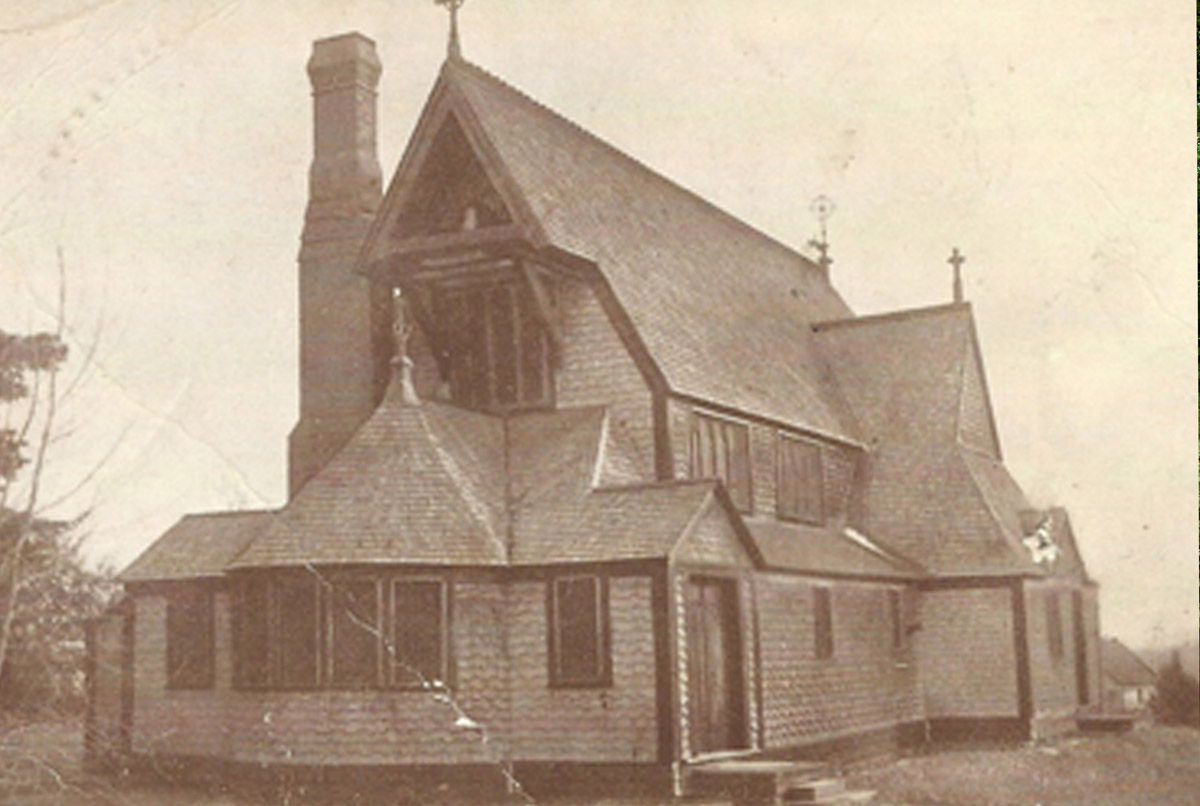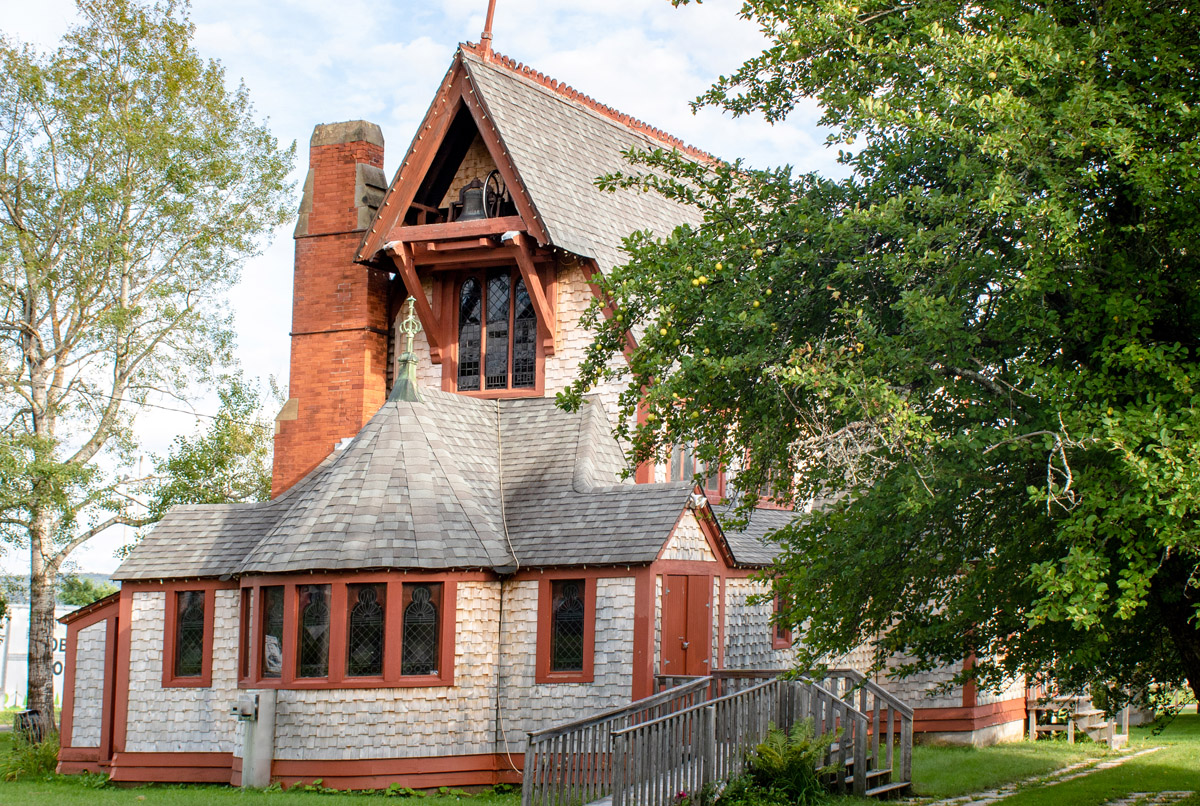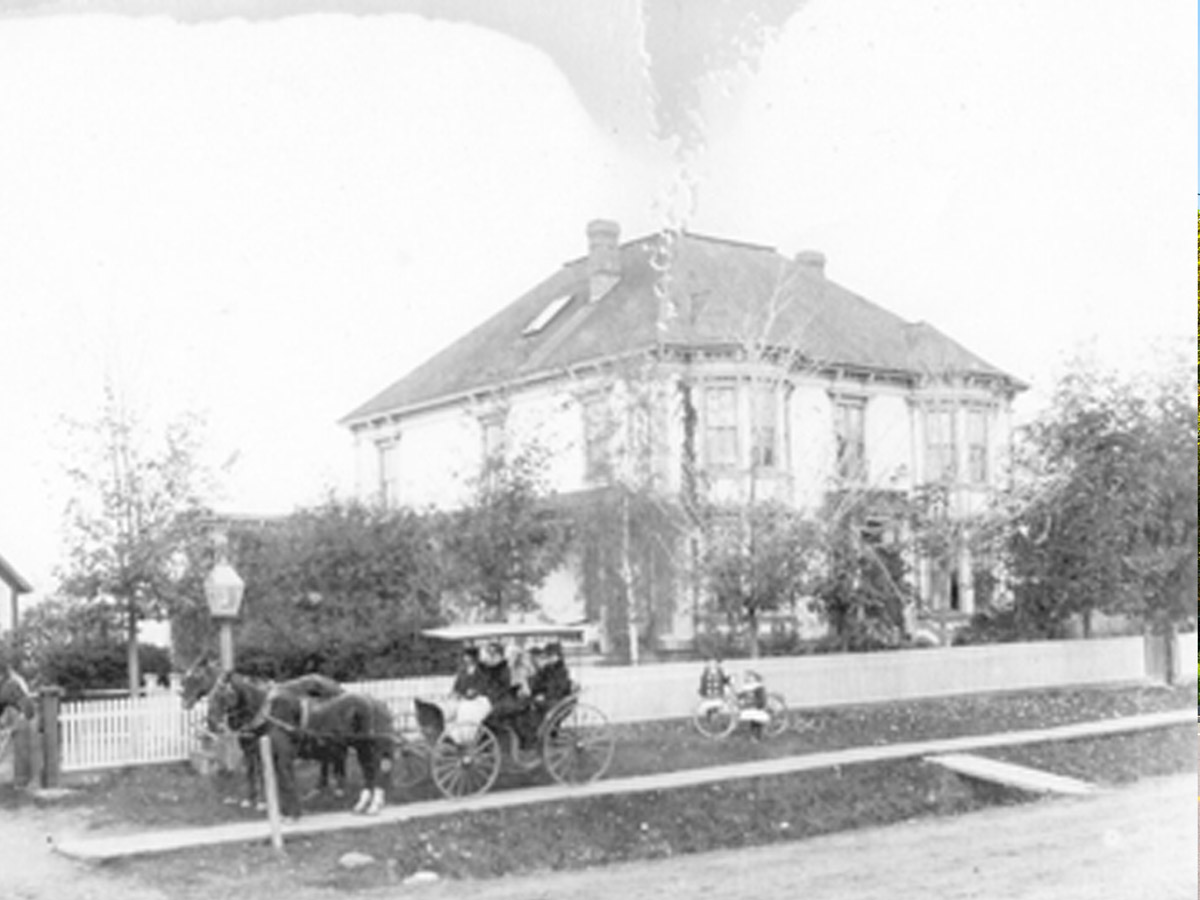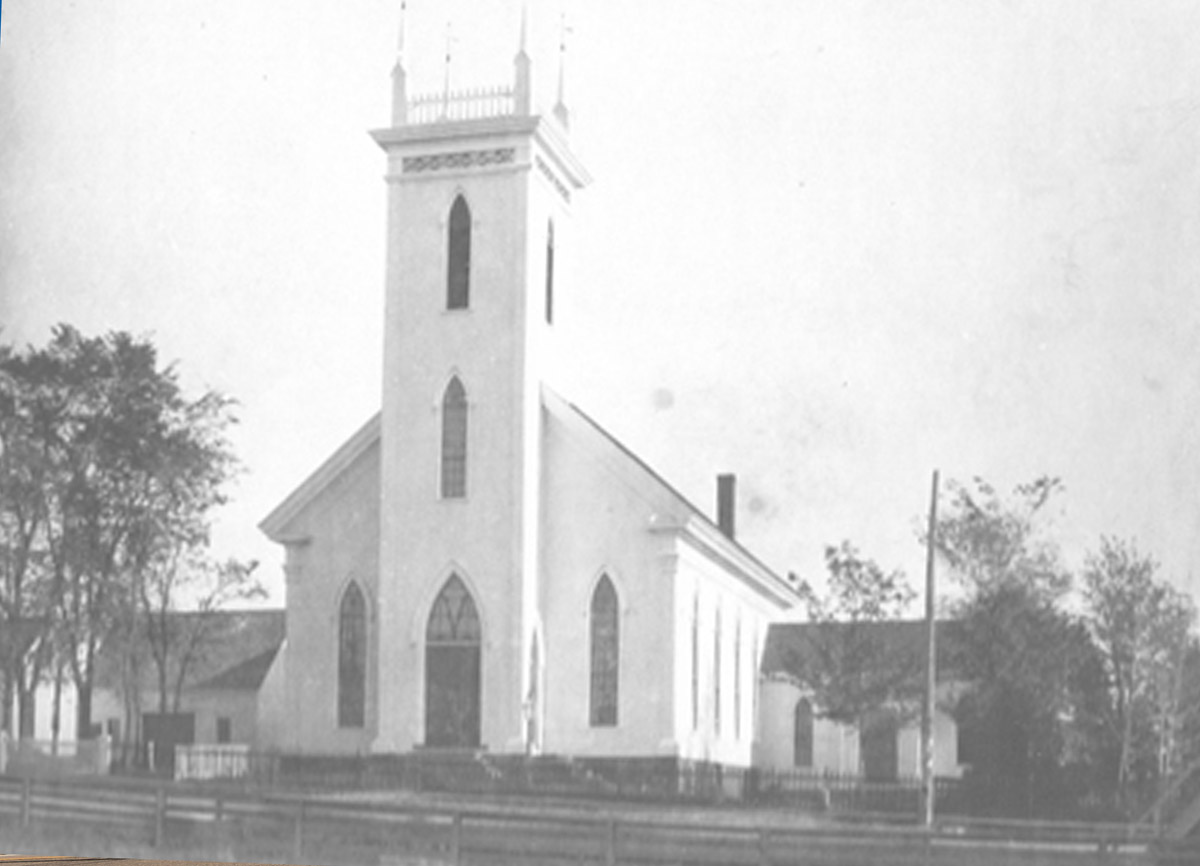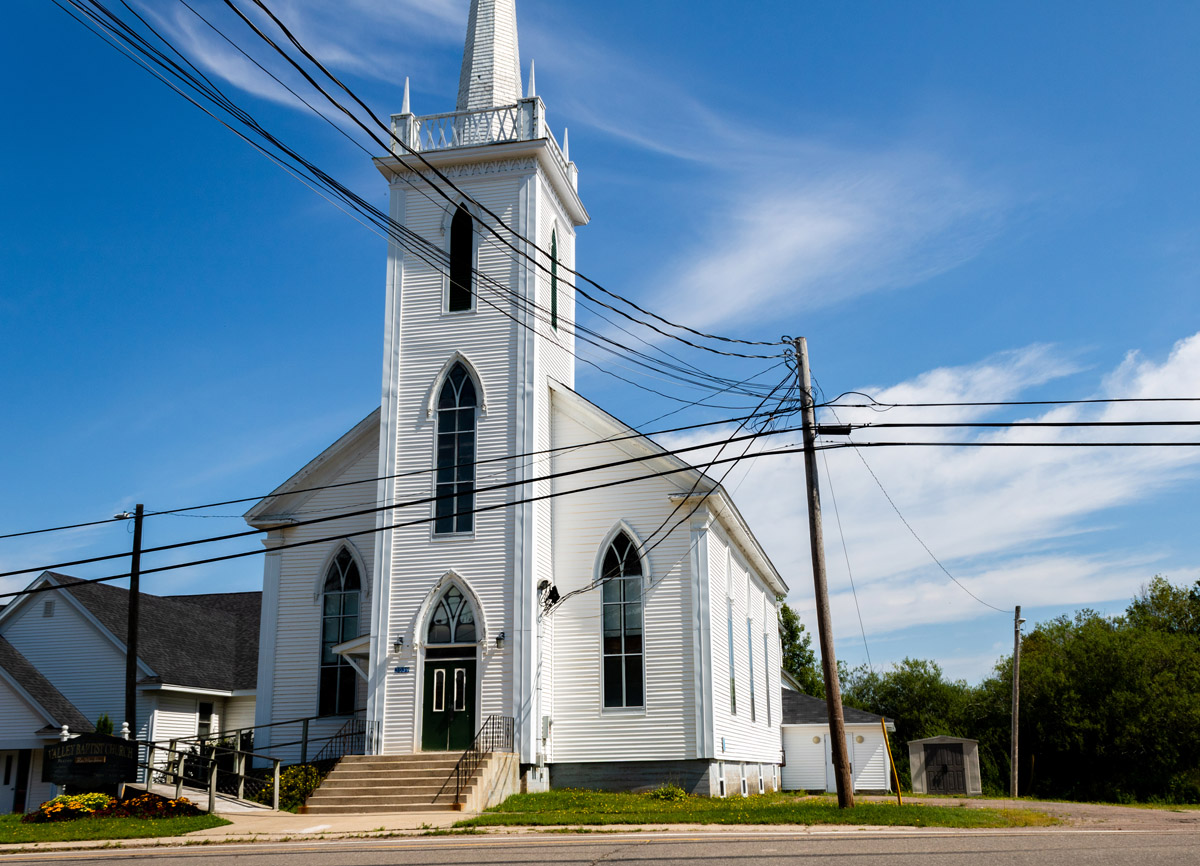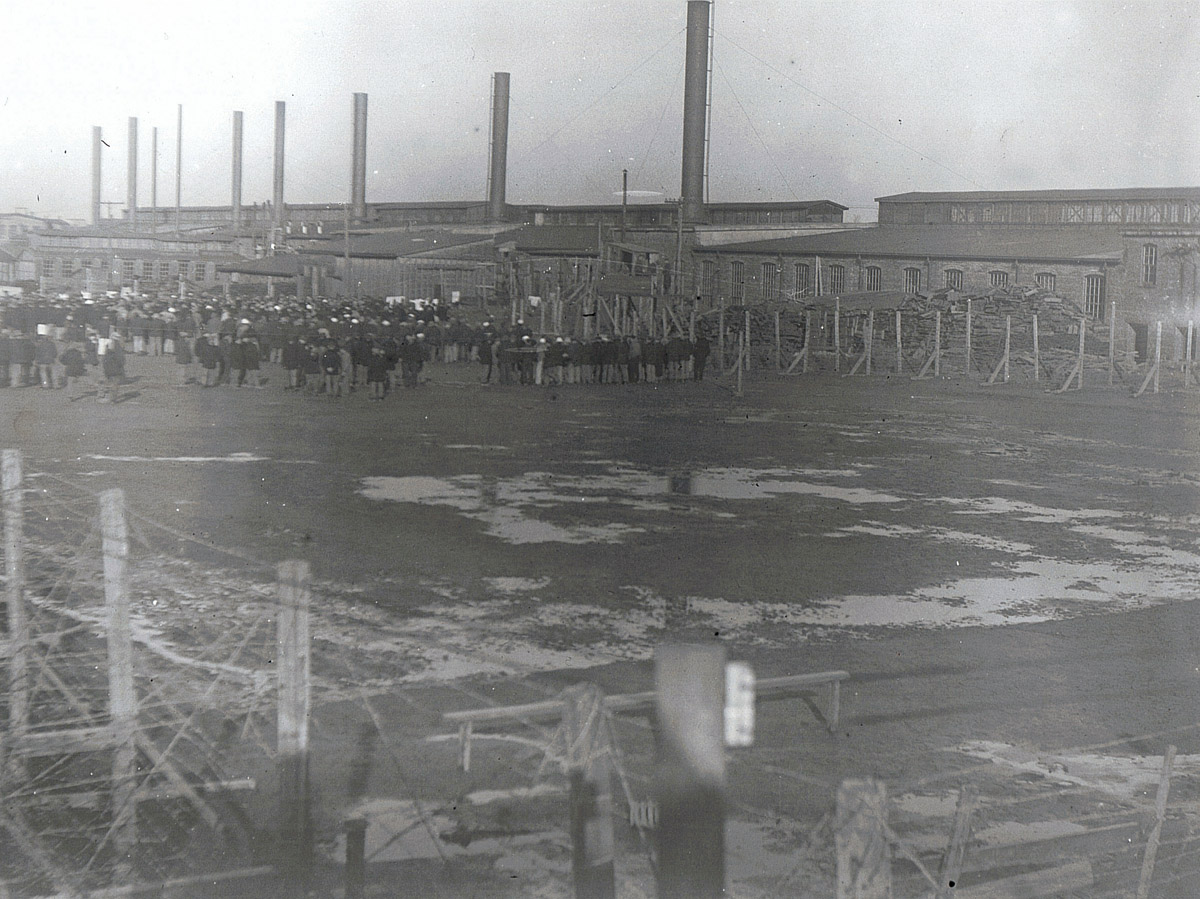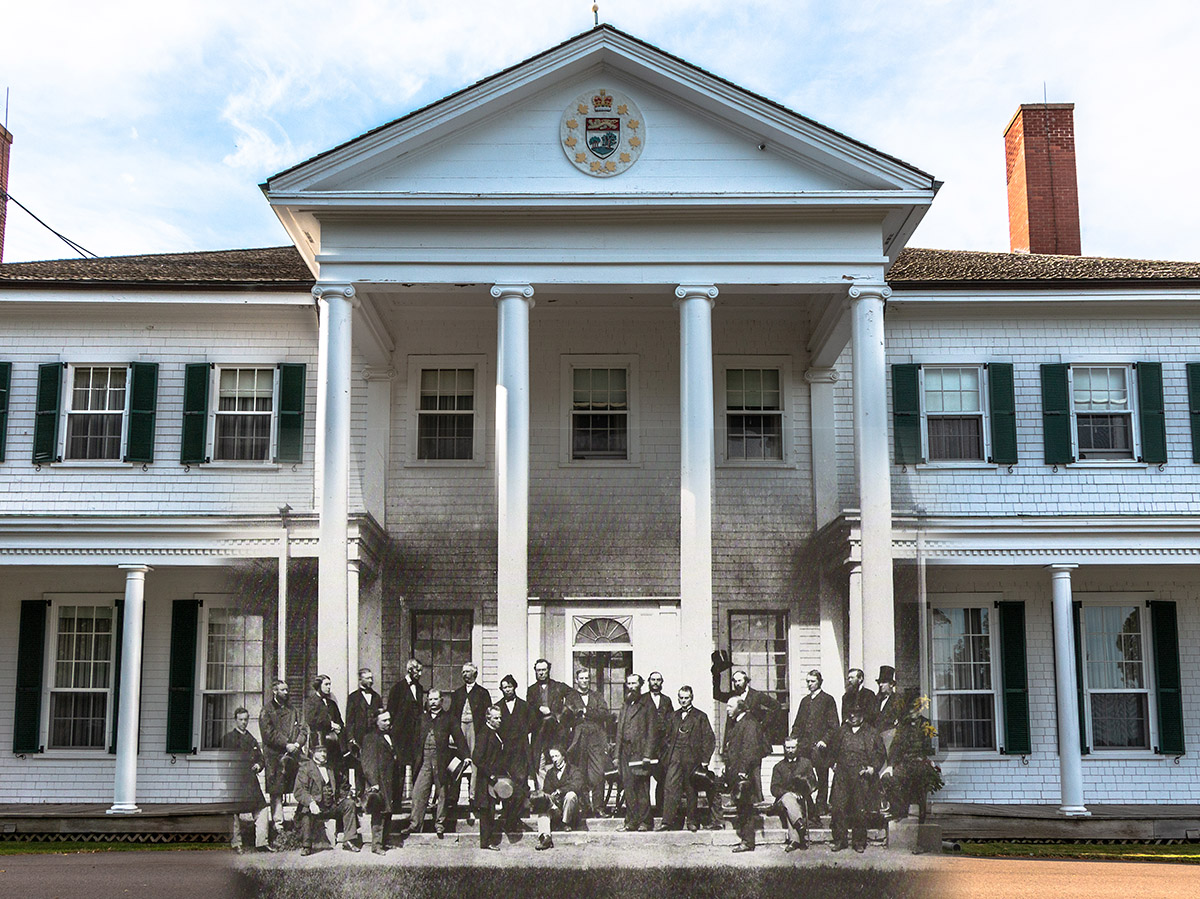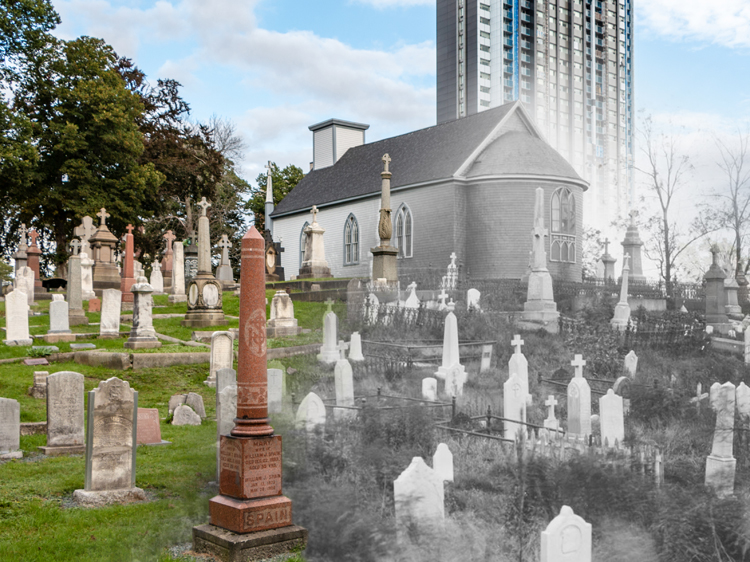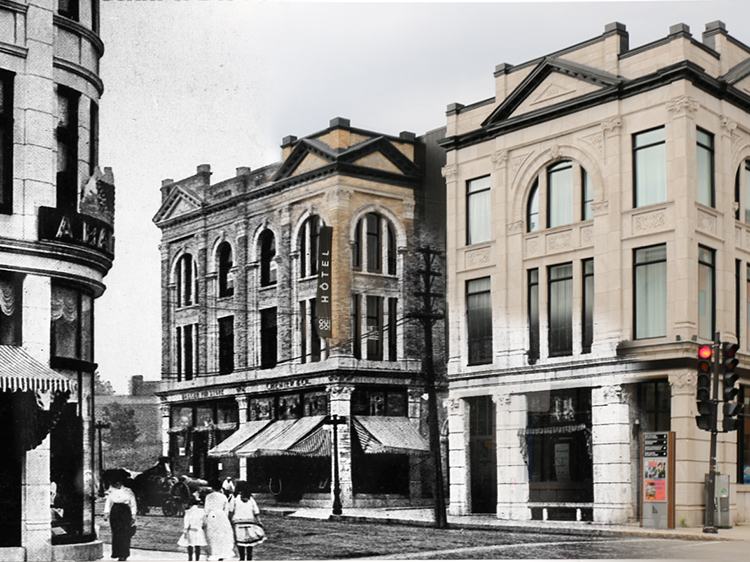Walking Tour
The Village of Hillsborough
Conflict and Change in Albert County
By Natalie Dunsmuir
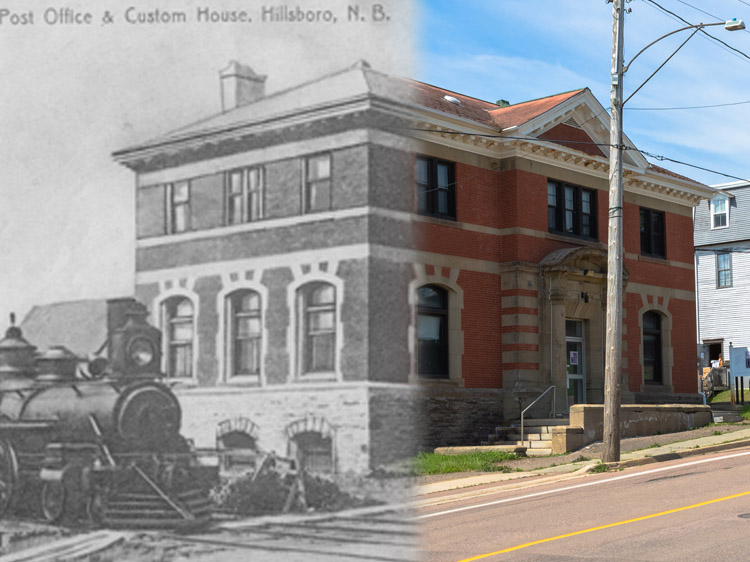
The town of Hillsborough in Albert County has a long, rich history of battle and industry, change and conflict. This community has been through many stages, from its early identity as the Acadian Village de Blanchard to its more recent existence as an industrial town centred on the production of gypsum. It has been the site of epic battles and community celebrations, industrial triumphs and personal tragedies.
In this tour, we will explore Hillsborough's history as we take a walk throughout this small town. The tour begins beside the abandoned gypsum silos down Steeves Road, beside the River Petitcodiac. Here, we will learn about the history of the gypsum industry in Hillsborough and its role as an economic driver in the community for years. Next, we will head back up Steeves Road towards town, pausing for Stop Two at the Battle of Petitcodiac Monument, where we will explore the history of this great battle.
Stop Three, at the old Hillsborough train station, looks into the history of the railroad in Albert County, while Stop Four discusses the effects both World Wars had on this small town. Next, at Stop Five we will learn about some early Hillsborough businesses. Then, turn down Legion Street and onto Mill Street to reach St. Mary's Anglican Church and learn about this historic building. From there, pay a visit to the Steeves House Museum for Stop Seven to learn about Hillsborough's early German settlers from Pennsylvania and the history of the prominent (Steiff) Steeves family.
Stop Eight, back on Main Street, continues with the legacy of the Steeves family. Then, we take a look at another influential Hillsborough resident, John L. Peck, and finally, our last stop takes us to the Hillsborough Baptist Church, now the site of a German Bakery. The tour wraps up with a look at the history of this church and the Baptist religion in Hillsborough.
This project is a partnership with Fundy Tourism.
1. Gypsum Mining in Hillsborough
Library and Archives Canada a044891-v8
1936
This photograph from 1936 shows the gypsum silos in Hillsborough, which were built in 1928 and used to store gypsum for many years. The large, concrete silos were some of the first buildings in Canada to be constructed using poured concrete and moveable frames. They still stand today, now a place for graffiti artists and urban explorers rather than industry.
This photo also shows the conveyor belts that moved the processed gypsum to the boats that would then transport it to markets around the world. The white powder in the foreground of the image is actually powdered gypsum. Gypsum mining and processing was Hillsborough's primary industry for over a century.
* * *
Gypsum mining, which employed many Hillsborough residents, was originally done with lanterns and pickaxes. Miners carved gypsum from the walls of the tunnels and loaded it into carts, which were then pulled by horses through the mine to the main shaft. From there, the carts were pulled by a steam-powered cable system to the surface and loaded onto the company's private railway to be shipped to the mill. The gypsum rocks were crushed into a powder at the mill and dried over wood-burning furnaces.
Gypsum may have been Hillsborough's main resource for over a century, but it was not gypsum that brought the first European settlers to the area. In around 1700, a century and a half before the beginning of gypsum mining in the region, the Acadians arrived here and established the Village de Blanchard. They did not come for the gypsum but for the lush marshland, which they converted to valuable farmland using a system of dikes. In the next stop of this tour, we will learn more about this Acadian history.
As you walk up Steeves Road towards town for the next stop, keep an eye out for the CF-101 Voodoo fighter jet, displayed on the right side of the road. This plane acted as an escort fighter, interceptor, and tactical reconnaissance aircraft during the Cold War.
2. Albert County's Railway
1936
In this photograph from 1936, two men, Leonard Steeves and Fen Barnett, stand outside of Hillsborough's train station. The wooden building has a sign on the outside which reads "Hillsboro", reflecting the town's old spelling. The men stand in front of two parked cars. The railway system in Albert County ran between the town of Salisbury, which had a connection to the main rail line, and the town of Albert, though an extension to Alma also existed for a brief few years.
* * *
In 1875, this pressure paid off, and a grant was awarded to a group of Englishmen headed by Thomas McHenry and John Lewis. The railway was completed between Albert and Salisbury in 1876, which meant that industrial operations such as the Albert Mines, the gypsum mills in Hillsborough, and the oil fields in Stoney Creek finally had reliable access to their markets.
Yet, this wasn't enough for everyone. After all, there were profitable industrial operations beyond the village of Albert. In 1880, Harvey businessman Gaius Turner received a government grant of $9,000 to extend the line three miles from Albert to Harvey. Turner owned a shipyard at Harvey, and the line would make obtaining supplies much easier.
Later, Turner also extended the line all the way to Alma, but this ill-fated venture only lasted a few years before facing bankruptcy. Alma's main industry, logging, was seasonal in nature and therefore never faced the problem of ice in the Petitcodiac. The line from Albert to Harvey also shut down relatively quickly after suffering a bridge collapse over the Shepody River in 1894.
The line through Hillsborough lasted much longer, with the section from Albert to Hillsborough not closing until 1955, and the line from Hillsborough to Salisbury open until 1981. In the end, it was the prominence of highways and truck shipping that led to these closures. It didn't help that the Hillsborough plaster mill went out of business in 1980, cutting the railway's freight traffic. The train station at Hillsborough was instead transformed into the Salem & Hillsborough Railway Museum.
3. The Battle of Petitcodiac
The monument beside which you now stand commemorates a key moment in the history of this region: the Battle of Petitcodiac. The stone structure and plaque were erected in 1918 and have stood here ever since, memorializing a battle which took place to the south of here and below the village in the year of 1755.
* * *
Centuries of tension between England and France boiled over into the global Seven Years War in the 1750s, and many of the battles of this war took place in North America, as these major colonial players fought over power. In 1755, the Acadians got caught in the crossfire, violently forced to leave their homes in an event that would become known as Le Grand Dérangement, or in English, the Great Expulsion. British troops destroyed the Acadian communities in Albert County, burning farms and houses to the ground and separating families to ship them away to the United States. On September 3rd, 1755, in a spot not far from where you currently stand, the Acadians fought back.
The British sent two companies of troops to the region of the Petitcodiac River with the mission of burning the Acadian villages and forcing their inhabitants to flee. A detachment, led by Major Joseph Frye, was deployed to the west bank of the river. They destroyed the village of Chipoudie (Shepody), south of here, and then moved on to Blanchard. Here, they destroyed crops, burned houses and barns, and kidnapped the women and children for deportation. Before they could return to their boats, however, they met a force of French troops led by the last remaining French military officer in the region of Acadia, Charles Deschamps de Boishébert. Pinned on the open marshes and unable to get to their boats, the British were trapped.
The fighting raged on for several hours before the British troops managed to escape to the river with high casualties—sixteen men died and seven were wounded. The Acadian forces had won the battle, but it was a bitter victory. Their towns lay in ruin and their crops had been destroyed. Perhaps most brutal of all, their families had been taken from them. Major Frye's forces had succeeded in burning 300 houses and kidnapping 30 women and children.1 The Battle of Petitcodiac may have been a victory, but it did not secure an overall victory, and it was in fact the last organized resistance to the Great Expulsion.
4. Hillsborough at War
ca. 1943
The 1940s were a time of challenge for people across the globe, and this was no different in Hillsborough, as this small community coped with the devastating effects of the Second World War. This photo is likely from the Red Cross Parade which took place in Hillsborough in 1943 to support the war effort. In it, uniformed men march down the hill and past the brick post office building in the background. The First World War was also a time of struggle and tragedy in Hillsborough.
* * *
Carl Clinton Irving was born in Hillsborough in 1896 to Margaret and Sanford Irving. He worked as a farmer before war struck, a common occupation at the time. Carl was drafted in 1917, at the age of 21, and never returned home. His death in 1918 was not in battle but rather in hospital suffering from the Spanish Flu, a disease which killed 25 million people worldwide. George LeBurne Beaumont, also from Hillsborough, died of disease while at war as well, this time from tuberculosis. He was 29 at the time and had worked as a miner for the Hillsborough Manufacturing Company before he enlisted in 1915.
The field of battle also took William Pearl Cole, a 28-year-old farmer from Hillsborough who enlisted in 1916 and fell during the Battle of Passchendaele, otherwise known as the Third Battle of Ypres, in Belgium. His name is memorialized at the Menin Gates in Ypres. With him fell George Peck, another Hillsborough soldier and son of wealthy Albert County businessman John Peck. Charles Osman Steeves, a 27-year-old farmer, was a private with the 5th Canadian Mounted Rifles. Originally reported as "missing in action", he was later declared "killed in action" and is buried in Pas de Calais, France.
These are only a few of the men who died in the First World War, and others fell in the Second World War decades later. Hillsborough, and Albert County in general, will never forget the effects of both of these global crises.
5. Early Businesses
This photograph was taken outside of the building which today houses Ford's Pharmacy. The image shows two Hillsborough businesses, Lloyd West's confectionary shop and Bill's Jewelry. The man posing for a photo in front of the shops is likely Bill, the owner of this store. In the background are two kids and a woman in the doorway of the confectionary shop. Over the years, many different businesses have called this building home.
* * *
When the Jordan Steeves' Block first opened for business, its main tenants were a hardware store and a music and technology store. The former was run by David B. Livingstone, who specialized in selling carriages, sleighs, harnesses, and special winter buffalo robes to keep his clients warm throughout the long winters. The latter business was owned by John H. Barrie in partnership with P.D. White, a jeweller. The shop sold gramophones, pianos, organs, clocks, and equipment for photography.
Later on, the block came to house Bill's Jewellery Store and the business of the West family. Lloyd and Eva West rented the premises for their confectionery shop between 1930 and 1955, amazing the village children with their glittery glass and chrome soda fountain. It was Eva who ran the store during the day while Lloyd worked in his father's blacksmith shop on nearby Mill Street. The building later underwent a period of neglect, but it was eventually purchased and revitalized. Today, it houses the town's pharmacy.
6. Steeves House Museum
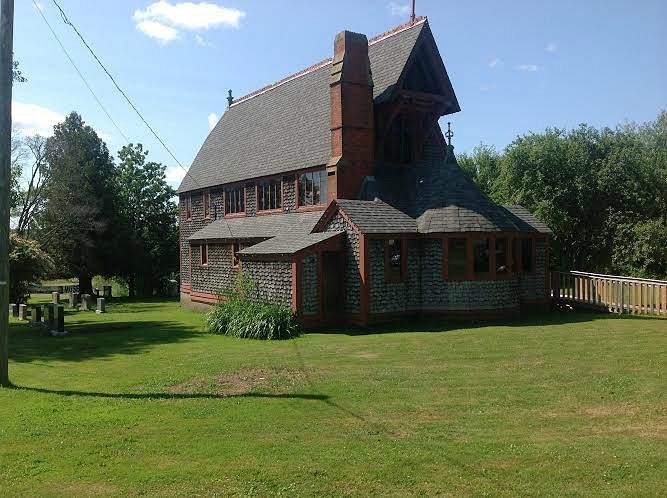
While we could not locate a historic photo of this house, we wanted to include it on our tour. The house was first constructed in 1812 and was the birthplace of a prominent Hillsborough resident who helped shape the country in his role as a politician. William Henry Steeves was born in this cottage in 1814 and went on to attend the famous Charlottetown Conference and the later Quebec Conference to discuss the possibility of confederation. He was part of the instrumental Steeves family that helped to found Hillsborough.
* * *
The Steeves family grew rapidly. Heinrich and Rachel Stieff, the first Steeves to settle in Hillsborough, had seven sons, and those sons went on to have many children as well (William Henry Steeves, for instance, was the eldest of 11 children). Today, it is estimated that 250,000 people in the world are descended from Heinrich and Rachel. These include such notable people as Jack Layton, the former leader of the national New Democratic Party, and Dr. Anita (Newcomb) McGee, the first and only female Assistant Surgeon General of the US Army and the founder of the US Army Nurse Corps.
William Henry Steeves, the great-grandson of Heinrich and Rachel, was certainly an influential figure in Hillsborough and in New Brunswick as a whole. While he began his career as the owner of a small store and a post office, he later became involved in the lumber industry and then the shipping industry, eventually founding a shipping company with his brother Gilbert. But it is his roles in politics for which he is remembered.
William was elected to the New Brunswick legislature in 1846, at the age of 32. From there, he was appointed to the Legislative Council in 1851 and became the Surveyor General three years after that. In 1855, he became the first Minister of Public Works in New Brunswick. His climb upwards through the legislature led to him attending the Charlottetown Conference in 1864 to discuss Confederation. During the first vote on the matter, New Brunswick was the only province to reject Confederation, but within the province, Albert County voted strongly in favour. The vote for Confederation later passed, and William Henry Steeves is known as a "Father of Confederation".
7. The Anglican Church
1912
The Anglican church in Hillsborough, pictured here in 1912, is unique for its incredible architecture. The building, designed by J.T.C McKean, was built in a mixture of styles, blending Queen Anne Revival, Shingle, and even Gothic Revival architectural styles together to create something unique. The large, prominent chimney, pictured to the left of this photo, stands in the place of a steeple, symbolizing warmth and safety in a rural landscape where the climate and weather is often cold and unforgiving.
The architect of this church, McKean, was part of the McKean and Fairweather architecture firm which also built the Saint John City Market, a landmark that is today famous in that city. The church has a strangely nautical theme from the inside, with the ribbing and planking of the ceiling giving off the impression of an upside-down ship's hull, while the bowed end of the church resembles the area on sailing ships, called the fantail, where the captain generally has his cabins.
* * *
8. John L. Peck
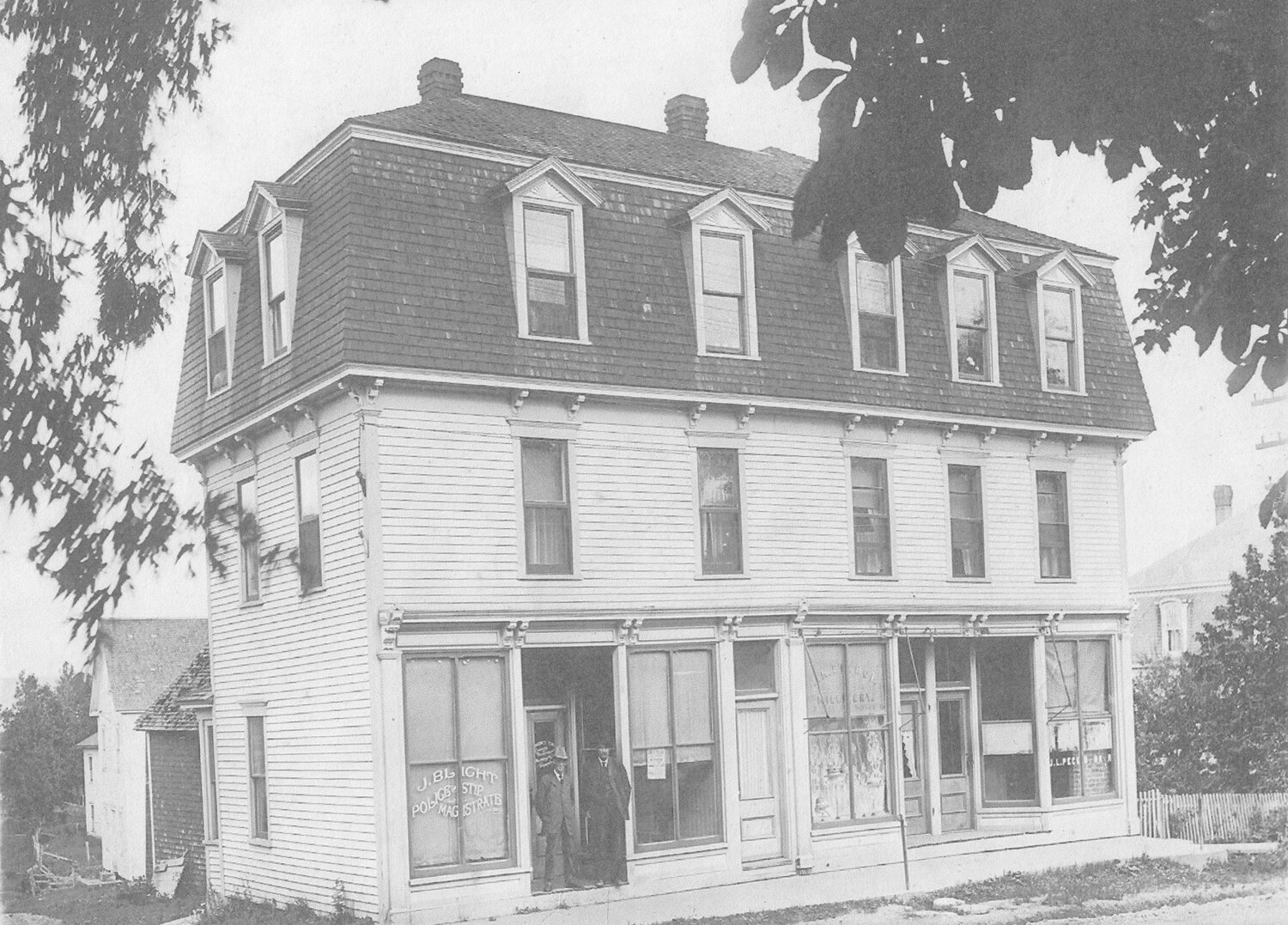
Ca. 1920s
This building was the Peck Bank Building, built by John L. Peck in 1897 at the start of what would become his prominent and successful career in business. The photo was taken in the 1920s and shows two men, dressed well in suits and caps, standing in the doorway of the building. The Peck Bank closed in 1928, after John Peck's death the year before, and the building burned down in 1947.
* * *
John moved to Hillsborough at the age of 23 in 1881 and began to expand his business interests. He bought his grandfather John Lewis's store and soon opened the Peck Bank. He also became the principle owner of the Prince William Hotel, purchased a hardware flooring mill, and became the owner of the local newspaper, the Albert Journal. In 1906, he acquired a window sash and door factory. Between 1917 and 1927, Peck served as an MLA in the New Brunswick legislature.
Peck married Minnie Bishop, and the couple had one son, George Peck. Tragically, George died in the First World War during the Battle of Passchendaele in 1917. He is immortalized in the memorial in Ypres, Belgium, at the Menin Gates. This was not enough for his heartbroken father, however, and John constructed the Peck Memorial Hall on Main Street as a lasting tribute to his beloved only son.
9. The Steeves Family
ca. 1900
This photo shows a busy Main Street in Hillsborough. To the left, a man guides a small child on a horse while a family in a horse-drawn cart pauses on the side of the street and two children stand next to a bicycle. The house to the right of the photo belonged to local businessman Jordan Steeves and is over 165 years old. It was built in 1855 in an Italianate residential architectural style with a hipped roof, squared massing, and elaborate detailing.
This house has gone down in local legends not just because of its impressive presence on Main Street but for the stories of the ghost that haunts its halls. The manor was run as a Bed and Breakfast for many years, and during this time, a frightened guest was found one morning sheltering in his bathroom. He told everyone that he had encountered a spirit. He had woken at night to an elegant lady dressed in white standing before him. She had raised her arm towards him and then slowly faded away. Adding to the guest's terror, he later recognized the woman in one of the portraits in the parlour of the house.
* * *
Jordan also served as an Albert County Councillor for many years. He died in 1915, and his son, Charles, took over his company. It then passed to his grandson, Reginald, and remained in business until 1979.
10. The Baptist Church
1925
The church building in this photograph dates from 1912 and is the most recent of a long line of churches that have stood in this spot. This photo was taken in 1925 and shows a car parked outside the church on a smooth dirt road. Note the impressive stained glass windows and multiple turrets which make up this building's unique architecture. This site has been home to a house of worship for centuries, and the origins of the nearby cemetery stretch even further back.
* * *
A Baptist church was built on the site of the old meeting house in this location to accommodate the new congregation, and throughout the years, it was replaced many times by new churches. A fire in 1910 burned the second Baptist Church to the ground, and the church which currently stands here was built as a replacement and opened in 1912. Today, however, Baptist services are held in a new church on the edge of town, on Salem Road, while the building you stand in front of now houses a German Bakery.
The history of this religious site, however, begins not with the building of a church but with the cemetery beside it, which has been used as a burial ground since the first Acadian settlers arrived in the area in 1700. After the Great Expulsion of the Acadians, the arriving Anglo settlers in 1765 continued to use this same plot as a space to honour and bury their dead. If you wander among the tombstones, you will find a diverse set of names that reflect Albert County's history, from the first Acadians to the British, Irish, German, Swiss, and United Empire Loyalists who successively made this place their home.
Endnotes
3. The Battle of Petitcodiac
1. "Acadien Battle Field." Canada's Historic Places, Parks Canada. https://www.historicplaces.ca/en/rep-reg/place-lieu.aspx?id=18123.
5. Early Businesses
1. "Jordan Steeves Business Block." Canada's Historic Places, 2010. https://www.historicplaces.ca/en/rep-reg/place-lieu.aspx?id=16354.
Bibliography
"Acadien Battle Field." Canada's Historic Places, Parks Canada. https://www.historicplaces.ca/en/rep-reg/place-lieu.aspx?id=18123.
"Did you Know that Four of our Fighting Men from the First World War are Buried Here in Albert County?" The Albert County Museum & RB Bennett Centre, October, 2018. https://www.albertcountymuseum.com/news/2017/9/30/did-you-know-that-4-of-our-fighting-men-from-the-first-world-war-are-buried-here-in-albert-county.
"Gypsum." The Albert County Museum & RB Bennett Centre. https://www.albertcountymuseum.com/gypsum.
"Hillsborough Pioneer Cemetery." Canada's Historic Places, 2010. https://www.historicplaces.ca/en/rep-reg/place-lieu.aspx?id=18167.
"John Peck House." Canada's Historic Places, 2010. https://www.historicplaces.ca/en/rep-reg/place-lieu.aspx?id=18166.
"Jordan Steeves Business Block." Canada's Historic Places, 2010. https://www.historicplaces.ca/en/rep-reg/place-lieu.aspx?id=16354.
"Jordan Steeves House." Canada's Historic Places, 2010. https://www.historicplaces.ca/en/rep-reg/place-lieu.aspx?id=16345.
"Lest We Forget: Albert County's Honour Roll Updated - Pte. Charles Osman Steeves Killed in Action June 26, 1917." The Albert County Museum & RB Bennett Centre, October, 2017. https://www.albertcountymuseum.com/news/tag/Sacrifice.
"Saint Mary's Anglican Church." Canada's Historic Places, 2009. https://www.historicplaces.ca/en/rep-reg/place-lieu.aspx?id=16641.
"Village of Hillsborough." MyNewBrunswick.ca, August 2017. https://mynewbrunswick.ca/village-of-hillsborough/.




